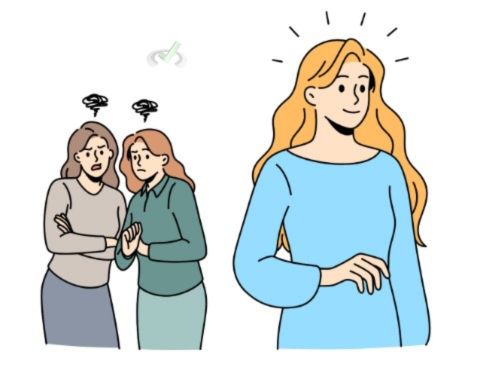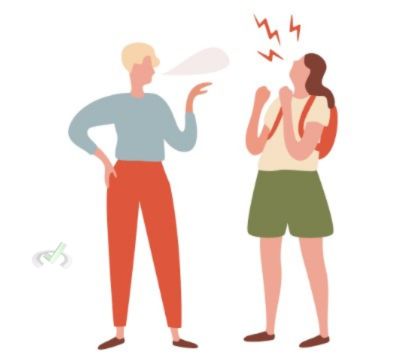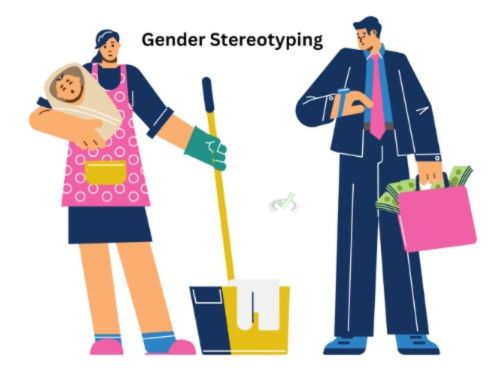Social perceptions shape how we see ourselves and others in society. Understanding these perceptions helps us navigate social interactions and better understand human behavior. Let’s dive into the different inherent social perceptions and why they matter.
I. Understanding Social Perception
Social perception is how we form impressions and make judgments about others. Various factors influence these perceptions and can affect our interactions and relationships.
Person Perception
Person perception is how we form impressions of others. This can include their appearance, behaviors, and the context in which we meet them.

- Appearance: We often judge people based on their looks. For example, someone is friendly if they smile a lot. If someone wears neat clothes, we might think they are organized. These judgments can affect how we interact with them.
- Behaviors: Actions speak louder than words. How someone acts can shape our view of them. For example, if someone helps others, we might see them as kind. If someone interrupts a lot, we might think they are rude. These behaviors can influence our trust and cooperation with them.
- Context: The situation in which we meet someone can influence our perception. For instance, meeting someone at a charity event might make us think they are generous. But if we meet the same person in a competitive setting, we might see them as ambitious.
Attribution
Attribution is how we explain the causes of people's behavior. We tend to attribute behavior to internal factors (personality) or external factors (situation).

- Internal Attribution: This is when we believe someone's behavior is due to their character or personality. For example, if someone is always late, we might think they are careless. We are focusing on their traits.
- External Attribution: This is when we think the situation causes behavior. For example, if someone is late because of traffic, we attribute their tardiness to external factors. We are focusing on the circumstances.
Stereotyping
Stereotyping involves making generalized beliefs about a group of people. These can be positive or negative, and individual differences are often ignored.

- Positive Stereotype: Believing everyone from a particular group is good at something. For example, thinking all athletes are disciplined. This can lead us to expect certain behaviors from them.
- Negative Stereotype: Assuming negative traits about a group. For instance, thinking all teenagers are rebellious. This can lead to unfair treatment and prejudice.
II. Factors Influencing Social Perception
Several factors can affect how we perceive others.
Primacy Effect
The primacy effect occurs when our first impression of someone has a lasting impact on our perception of them. For example, if the first thing we notice about someone is their friendly smile, we might continue to see them as friendly, even if we later see them upset. This first impression sticks with us.
Recency Effect
The recency effect is when our most recent information about someone influences our perception. For instance, if the last thing someone did was help us with a problem, we might think of them as helpful, even if they were rude earlier. The latest action can change our view.
Halo Effect
The halo effect is when we assume that someone with one positive trait must have others. For example, if someone is good-looking, they are also smart and kind. One good trait makes us think they have more.
Cultural Differences
Culture can shape how we perceive others. Different cultures have different norms and values, which can influence our perceptions.
An example of this is in some cultures, making direct eye contact is considered respectful, while in others, it might be considered rude. Knowing these differences can help us better understand behaviors.
III. Effects of Social Perception
Understanding social perception helps us see how our judgments can impact relationships and interactions.
Positive Effects
- Better Relationships: Accurate perceptions can lead to better understanding and stronger relationships. Knowing someone's true character helps us relate better.
- Effective Communication: Understanding others' perspectives can improve communication. We can talk more effectively when we see where someone is coming from.
Negative Effects
- Misunderstandings: Incorrect perceptions can lead to conflicts and misunderstandings. If we misjudge someone, it can cause problems.
- Discrimination: Stereotyping can result in unfair treatment of individuals based on group membership. This can lead to exclusion and prejudice.
IV. Coping with Social Perception Biases
Being aware of biases in social perception can help us manage and reduce their adverse effects.
Self-Awareness
Understanding our own biases can help us make more objective judgments. Hence, recognizing if we tend to stereotype can help us avoid unfair judgments. Being aware of our thoughts helps us change them.
Seeking Feedback
Getting feedback from others can provide a more balanced view. For instance, asking a friend for their perspective on someone difficult can help us see them more objectively. Different views can correct our biases.
Broadening Experiences
Exposing ourselves to diverse groups of people can reduce biases and stereotypes. Thus, participating in cultural exchange programs can help us appreciate different cultures and reduce cultural biases. Learning about others helps us understand them better.
V. Bridge/Overlap
Social perception studies connect to other important areas in sociology and psychology.
Social Identity
Social perceptions influence our social identity or how we see ourselves in groups. For example, if we perceive our group positively, we might feel more proud of our identity. Our group's image affects our self-esteem.
Prejudice and Discrimination
Understanding social perception helps us see how prejudice and discrimination form and how to combat them. Hence, awareness of stereotypes can help us challenge and change them. Knowing how bias works helps us fight it.
Interpersonal Relationships
Our perceptions of others affect our relationships. Accurate perceptions can lead to stronger, healthier relationships. Thus, seeing others as individuals rather than stereotypes can improve our interactions with them. Fair judgments lead to better bonds.
Cognitive Dissonance
Cognitive dissonance is the discomfort we feel when our beliefs and behaviors are inconsistent. Understanding social perception can help explain why people might change their beliefs to align with their behaviors. For example, if we believe in honesty but lie, we might feel uneasy. We might then change our beliefs to feel better about our actions.
Social Comparison Theory
This theory explains how we compare ourselves to others to evaluate our opinions and abilities. This comparison can affect our self-esteem and motivation.
For instance, if we see others doing well, we might feel motivated to improve ourselves. But, comparing too much can lead to low self-esteem.
Influence of Media
Media can shape social perceptions by reinforcing stereotypes or highlighting certain traits. This influence can affect how we view different groups of people.
For example, if TV shows often depict teenagers as rebellious, we might start believing all teenagers are like that. Media shapes our views by repeating specific images and ideas.
VI. Wrap Up/Key Terms
Let’s summarize the key points:
- Social Perception: How we form impressions and make judgments about others.
- Person Perception: Forming impressions based on appearance, behaviors, and context.
- Attribution: Explaining the causes of behavior as internal or external.
- Stereotyping: Making generalized beliefs about a group.
- Primacy Effect: The first impression has a lasting impact.
- Recency Effect: The most recent information influences perception.
- Halo Effect: Assuming one positive trait means others are present.
- Cultural Differences: Culture shapes perception norms.
- Social Identity: How we see ourselves in groups.
- Prejudice and Discrimination: Negative effects of biased perceptions.
- Cognitive Dissonance: The discomfort we feel when our beliefs and behaviors are inconsistent.
- Social Comparison Theory: We compare ourselves to others to evaluate our opinions and abilities.
- Influence of Media: Media shapes our perceptions through repeated images and ideas.
VII. Practice
Test your understanding with these questions:
Sample Practice Question 1
What is internal attribution?
A. Believing behavior is due to the situation.
B. Believing behavior is due to personality.
C. Making generalized beliefs about a group.
D. Assuming one positive trait means others are present.
Ans. B
Internal attribution means we think someone's behavior is because of who they are as a person.
Sample Practice Question 2
Which factor does not influence social perception?
A. Primacy effect
B. Cultural differences
C. Halo effect
D. Personal hobbies
Ans. D
Personal hobbies are individual interests and do not typically influence how we perceive others socially.







 To help you achieve your goal MCAT score, we take turns hosting these
To help you achieve your goal MCAT score, we take turns hosting these 





















 reviews on TrustPilot
reviews on TrustPilot